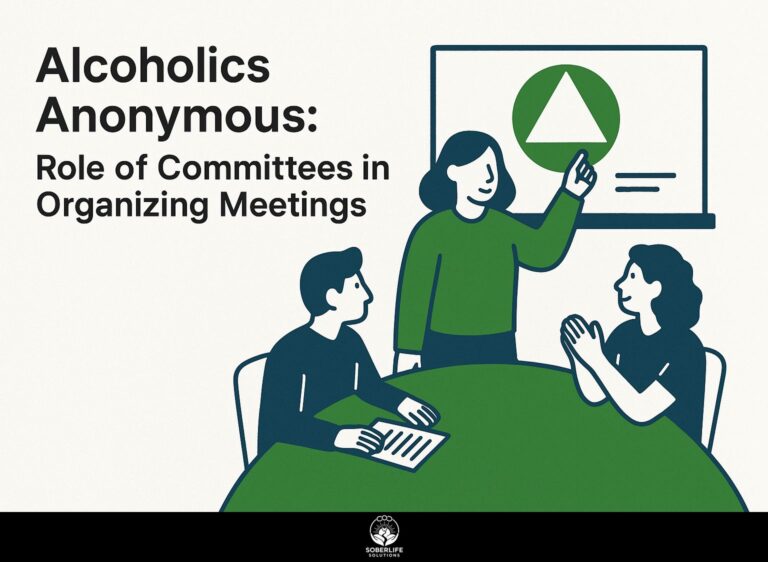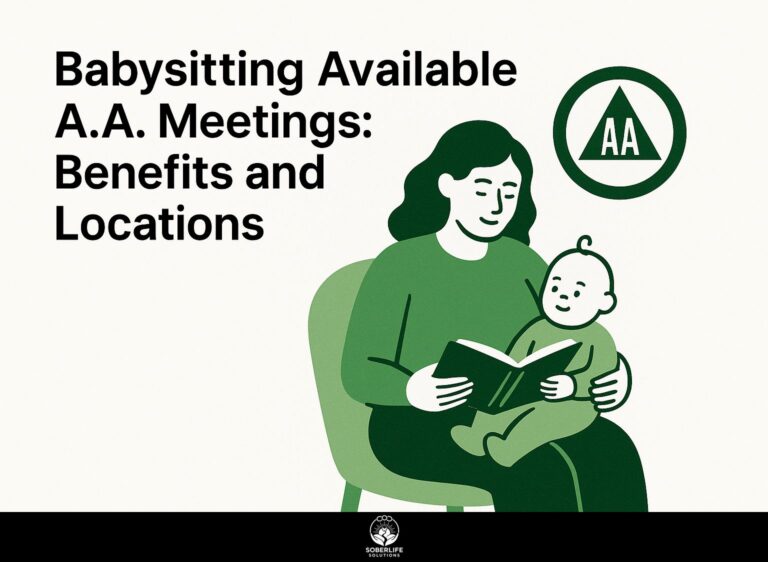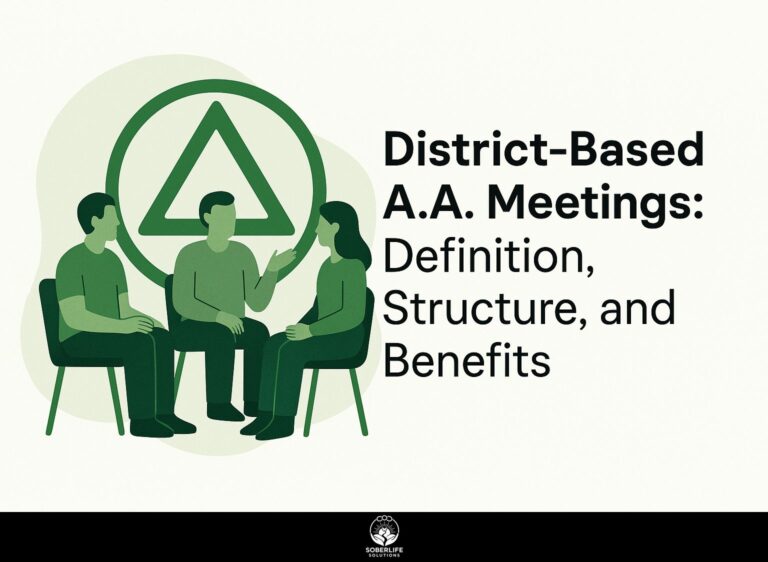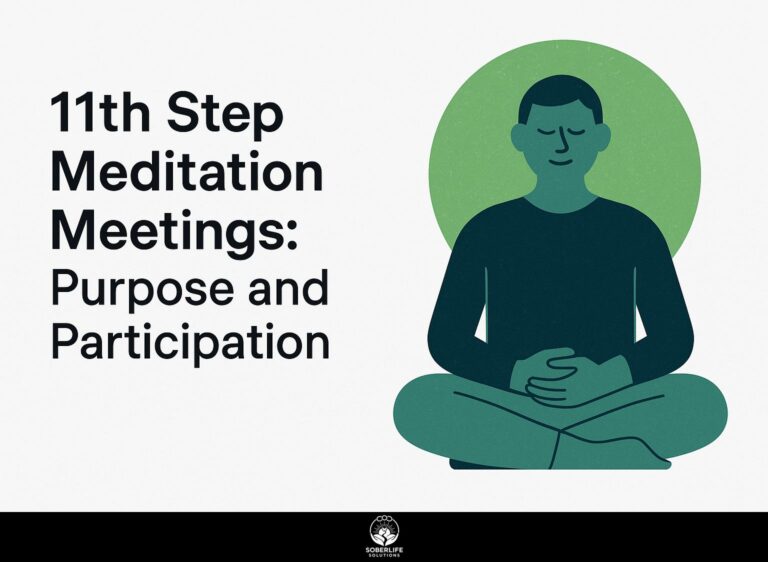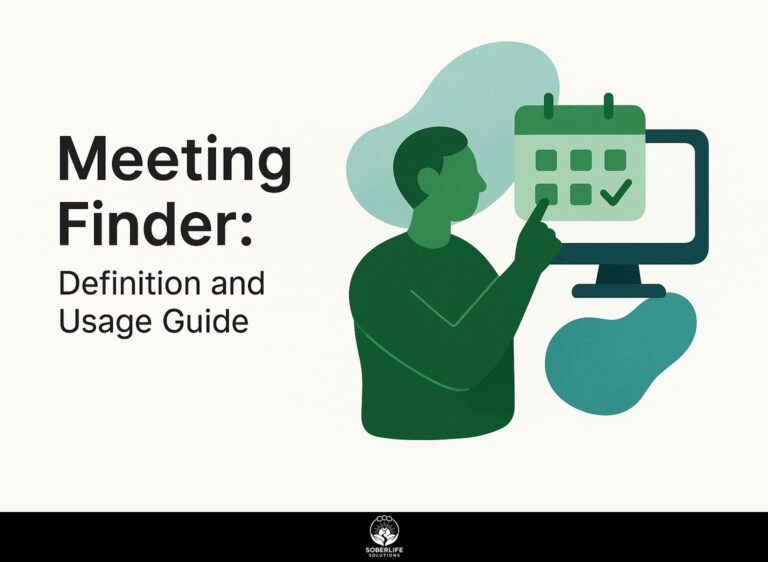Grapevine A.A. Meeting: Definition, Format, and Resources

Introduction to Grapevine A.A. Meetings

If you need help with your recovery from alcohol use, Grapevine A.A. meetings offer a special format within Alcoholics Anonymous. These gatherings, inspired by A.A. Grapevine and La Via, emphasize sharing personal stories and experiences. In this article, we explain what Grapevine meetings are, how they are organized, and useful materials related to them, to help you see how they can improve your recovery process. Come with us to learn about this key aspect of Alcoholics Anonymous.
Key Takeaways:
Purpose and Importance
Grapevine meetings offer more than just recovery; they create a supportive environment where members can keep their emotions steady.
In these meetings, participants share personal stories, which helps create an atmosphere of empathy and connection. Engaging with others who have similar experiences allows members to see that they are not alone in their struggles.
Tools like storytelling and active listening are very helpful because they create connection. Many members find that regular attendance strengthens their recovery, reinforcing their commitment to sobriety.
Using resources like the Grapevine magazine can help members think about their experiences, promoting continued self-improvement and bringing the community closer. As mentioned, peer support networks play a crucial role in this process, offering invaluable opportunities for individuals to connect and share their journey towards sobriety. For more insights into these networks, consider exploring the importance of peer support networks in recovery.
Overview of Grapevine
Grapevine is the official magazine of Alcoholics Anonymous, providing motivating stories and topics about recovery to its members since 1944.
For many years, Grapevine has been important in building a community feeling by sharing personal stories of recovery. Initially, it focused on providing updates about the A.A. organization itself, but it has evolved to include diverse voices and experiences, which helps individuals relate to others in similar situations.
The monthly publication includes essays, poems, and articles that show different ways people achieve sobriety and highlight the value of shared experiences in recovery. Ongoing conversations have greatly helped people learn and expand their knowledge of A.A. principles. This aligns with information from Wikipedia, which provides an extensive overview of Alcoholics Anonymous and its foundational principles.
Definition of Grapevine A.A. Meetings

Grapevine A.A. meetings are special gatherings in Alcoholics Anonymous where participants share personal stories and experiences about their recovery.
What is a Grapevine Meeting?
A Grapevine meeting is a type of meeting where people talk about their own experiences and thoughts on staying sober. Usually, this is done by focusing on a certain topic or reading from Grapevine materials.
Unlike traditional Alcoholics Anonymous meetings, which typically follow a structured format focusing on sharing individual stories, Grapevine meetings prioritize dialogue and exploration of specific themes.
Conversations can focus on topics like strength, ways to handle challenges, or personal achievements, helping members connect more closely.
Participants can improve their experience by reading the Grapevine publication before the meeting, which helps with better discussions. This method improves conversations and helps members share their experiences with each other, building a supportive atmosphere.
Key Features and Characteristics
Key features of Grapevine meetings include a focus on personal storytelling, diverse discussion topics, and the use of Grapevine literature as a foundational resource.
Participants are encouraged to share their experiences, helping members connect and learn more about each other. Each meeting typically lasts about an hour, allowing ample time for sharing and reflection.
To improve these conversations, facilitators often use particular Grapevine literature, like articles or essays that match the topics being discussed. This method adds depth to the discussion and offers clear examples of how others handle their problems.
The atmosphere is supportive and welcoming, which is important for encouraging openness and teamwork.
Format of Grapevine A.A. Meetings

Grapevine A.A. meetings provide a space for open talk and use a flexible discussion format.
Typical Structure
Typical Grapevine meetings often begin with a reading from the Big Book or Grapevine literature, followed by personal shares and group discussions lasting 60-90 minutes.
The first reading typically takes about 10-15 minutes, setting a reflective tone for the meeting. Personal shares follow, where members express their thoughts and experiences, usually lasting around 30-45 minutes.
This segment allows for authentic connection. The group discussion encourages feedback and allows for more detailed conversation, using the remaining time.
To make sure everyone feels included in the discussion, set a guideline for sharing, such as keeping comments short to maintain interest and respect various opinions.
Types of Discussions
Grapevine meetings can feature various discussion types, including open discussions, speaker meetings, and topic-based dialogues, engaging participants in diverse ways.
Open discussions let participants share their ideas openly, creating a feeling of togetherness.
In speaker meetings, a guest addresses the group on specific themes-such as mental health or industry trends-followed by a Q&A session.
Topic-based conversations focus on chosen subjects, encouraging thorough discussion. For example, a session on work-life balance might encourage people to share their own tips.
Using tools like Zoom for online meetings can improve communication, while platforms like Slack help maintain discussions between meetings, encouraging continued involvement. According to research from the APA, employing these digital platforms can mimic the dynamics of group therapy, providing an excellent framework for ongoing engagement. Related insight: AA Meeting Types: Speaker, Big Book & Proof of Attendance
Resources for Grapevine A.A. Meetings

Getting the right resources is important to get the most out of Grapevine A.A. meetings, including books and online tools.
Accessing Grapevine Literature
Members can access Grapevine literature through various channels, including subscriptions to the A.A. Grapevine magazine, which costs around $24 annually.
Besides the magazine, members can visit the Grapevine website, where they can buy individual stories or articles at reasonable prices.
Subscribing to the digital version is another option, typically priced at $15 annually, providing instant access to multiple publications.
Regular reading of Grapevine literature helps personal development by offering recovery stories, practical advice, and experiences from other members. Engaging with this content strengthens community bonds and offers inspiration necessary for maintaining sobriety.
Online and Offline Resources
Both online and offline resources improve the Grapevine meeting experience. Tools such as A.A.’s official website offer digital literature and meeting directories.
Forums like the A.A. Grapevine online community offer a space to share experiences and find support.
For those preferring offline resources, local libraries often host meetings, allowing access to printed materials and connecting with fellow members. Community centers might have rooms and resources specifically for recovery support. To further explore recovery support options, the Substance Abuse and Mental Health Services Administration (SAMHSA) provides a National Helpline offering assistance with mental health, drug, and alcohol issues.
By using these various tools, members can improve their experience and build a stronger community, getting the most out of their Grapevine meetings.
Benefits of Participating in Grapevine A.A. Meetings

Joining Grapevine A.A. meetings provides many benefits, such as building a supportive group and chances for personal development.
Community Support
Grapevine meetings help create a supportive environment where members can interact and discuss their recovery experiences securely.
By sharing experiences, members often develop bonds that reinforce commitment to sobriety. For instance, having a designated buddy system encourages accountability; members check in with each other weekly.
Storytelling during meetings helps members relate to struggles and victories, creating an atmosphere where vulnerability is welcomed. Some people form small study groups outside meetings, exchanging coping strategies and resources, which are vital aspects of peer support networks in recovery.
Tools like recovery apps can improve this support by enabling goal tracking and direct messaging between members to keep them engaged.
Personal Growth and Recovery
Engagement in Grapevine meetings promotes personal growth, as members often find inspiration and motivation through shared stories and experiences.
For example, a member named Sarah talked about how she dealt with anxiety by setting small, manageable goals. Seeing this, John, another member, began writing down what he achieved each day, which made him feel more sure of himself.
The use of collaborative tools like Trello helps members track their progress and celebrate milestones together. When people share feedback in a helpful environment, they can improve abilities such as speaking in front of others and being accountable, which helps them grow personally over time.
Summary of Key Points
The key takeaways from this exploration of Grapevine A.A. meetings are their role in community support, personal growth, and the accessibility of resources.
At Grapevine A.A. meetings, people feel connected and are motivated to talk about their experiences and challenges. This personal conversation helps people understand they are not alone, which is important in recovery.
These meetings often provide resources such as books and guides on dealing with stress and mindfulness exercises that participants can use outside of the meetings.
For practical engagement, consider facilitating a local Grapevine meeting by:
- Securing a community space
- Involving experienced members to guide discussions
- Ensuring a welcoming environment for newcomers
Frequently Asked Questions
What is a Grapevine A.A. Meeting?
A Grapevine A.A. Meeting is a group of people looking for help and support as they work to overcome alcohol addiction. It follows the principles of Alcoholics Anonymous and provides a safe and confidential space for individuals to share their experiences, strength, and hope.
What is the format of a Grapevine A.A. Meeting?
The format of a Grapevine A.A. Meeting may vary, but typically follows a structure of opening remarks, readings from A.A. literature, personal sharing, and a closing prayer. Some meetings may also include guest speakers or topic discussions.
Are there any resources available for Grapevine A.A. Meetings?
Yes, there are resources available for Grapevine A.A. Meetings, such as The Grapevine Magazine, which offers stories of experience, strength, and hope from members of A.A. Other resources include the A.A. Big Book, 12 Steps and 12 Traditions, and various pamphlets and literature from A.A. World Services.
Who can attend a Grapevine A.A. Meeting?
A Grapevine A.A. Meeting is open to anyone who has a desire to stop drinking. This is a friendly place where people of all ages and backgrounds can gather to help each other in their path to recovery.
Do I have to share at a Grapevine A.A. Meeting?
No, sharing at a Grapevine A.A. Meeting is not required. It is completely up to the individual whether they feel comfortable sharing their own experiences or if they prefer to just listen and learn from others.
Is there a cost to attend a Grapevine A.A. Meeting?
No, there is no cost to attend a Grapevine A.A. Meeting. A.A. is self-supporting and does not accept outside contributions, therefore there are no fees or dues for attending a meeting. However, you can choose to donate to help pay for meeting costs and materials.

